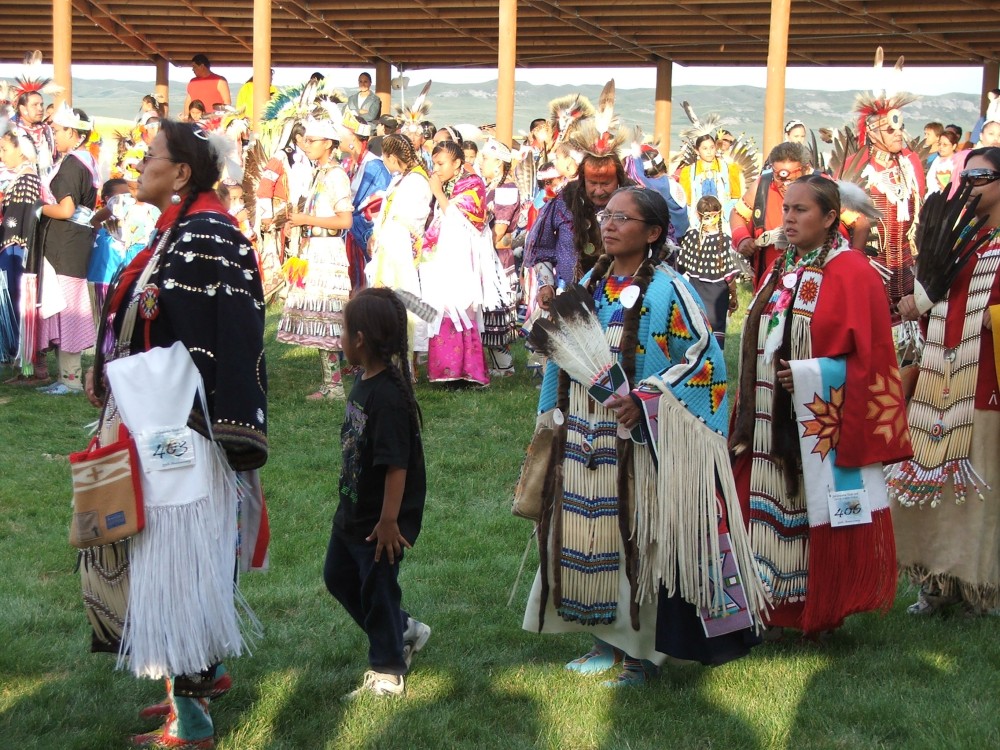Ceremonies, powwows work to adapt to rising global temperatures

Oglala Lakota women from the Pine Ridge Reservation on June 24, 2006. (Photo by Hamner_Fotos via Creative Commons)
As Shaylynn Bird danced across the arena under the hot midwestern summer sun, the Mandan Hidatsa Arikara and Oglala Lakota woman began to feel off.
Bird, who once won a 76-song iron woman competition at the 2024 Mandaree Powwow, began to see stars as she danced her 28th song in an Iron Woman special at the Mille Lacs Hinckley Grand Celebration Powwow in Hinckley, Minnesota, on June 22.
Despite being in the top six, Bird did something unexpected; she walked off. The soles of her feet were burning from dancing on turf above hot concrete, and she didn’t feel right.




